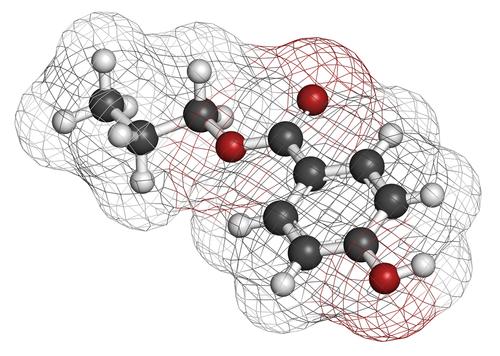On Monday, a paper published by the UK medical journal The Lancet Diabetes & Endocrinology made waves claiming that endocrine-disrupting chemicals cost the U.S. $340 billion - over two percent of our GDP. In other words, the U.S. is losing the equivalent of half the federal defense budget in health care costs and lost wages due to low-level exposure to chemicals in everyday items, such as plastics or lined metal food cans.
Researchers theorize that these chemicals can cause health problems by interfering with our endocrine system, which produces hormones in our bodies. But it’s not just manmade chemicals that can interact with the endocrine system—these chemicals can also occur naturally in plants we eat.
It’s a scary prospect—everyday items are costing our country billions. Unfortunately, like many other headline-generating studies, this paper is based on flawed science.
In the push for newsworthiness, many press releases tout the findings of studies that rely on small sample sizes, flawed methodology, illogical leaps, and assumptions as “groundbreaking”.
Take this new paper. In pegging the cost of endocrine disruptors at $340 billion, the researchers first had to assume that each chemical it examined was, in fact, an endocrine disruptor, even though such allegations are unsupported by science. They also had to assume that exposure to chemicals caused particular health problems. This is a major assumption, considering most studies referenced in the paper show only small correlations.
Conveniently enough, the paper’s authors neglected to detail the methods used to select the literature fueling their endocrine-disrupting allegations. How did they decide which studies to include? Were studies revealing no link between chemicals and negative health effects excluded from the authors’ review entirely?
One of the paper’s primary targets is the media’s favorite endocrine villain, bisphenol A (BPA). Extensive reviews by more than eight different governments have confirmed BPA is safe at its current usage level. And that’s not to say BPA is understudied, or that science hasn’t yet found it’s “Aha!” moment. A vast library of studies have examined its impact, with over 10,000 citations listed on PubMed alone.
With universities and federal agencies under constant pressure to impress their donors (or Congressional Appropriations Committees), it’s not unworldly to speculate data may be “cherry-picked” to fit a researcher’s hypothesis.
Should we be worried about chemicals that may affect the endocrine system generally? It’s worth noting that most studies of endocrine disruption examine chemicals in concentrations orders of magnitude higher than what the average American would be exposed to. Literature reviews have found even “low dose” evaluations employ exposure rates up to 500-fold above typical human exposure levels. While such an evaluation is useful in determining hazard – evaluating whether a substance feasibly could cause harm at some level – it does nothing to communicate whether or not a chemical should be of legitimate concern to the average person.
Consider the difference in exposure between swimming in a bath of mercury versus consuming a serving of tuna. While the first would likely kill you, the amount of mercury in fish is so low that the average male could safely consume several pounds of tuna each week without giving mercury a second thought. And the health benefits of consuming tuna far outweigh the tiny risk of mercury exposure.
Negating risk assessment is a danger to the health community and public at large. By assuming that dosage in a study acts the same way as a true low dose in real-life exposure, we are comparing apples and oranges. Perhaps most dangerously, pointing to a chemical scapegoat distracts from addressing the root of the problem.
According to the Harvard School of Public Health, the global rate of obesity has nearly doubled since 1980. Attributing this health burden to “endocrine disruption” from the plastic holding your food rather than a personal habit of excess caloric intake is simply irresponsible. After all, chemicals have been in consumer products since well before the 80s.
In truth, health science is a game of incremental understanding, and wild claims that endocrine disruptors cost our economy billions do more to set back public understanding than to advance it—along with creating unnecessary fear for those of us who enjoy canned fruit or soup or drinking from plastic water bottles.
Dr. Joseph Perrone is chief science officer at the Center for Accountability in Science.




